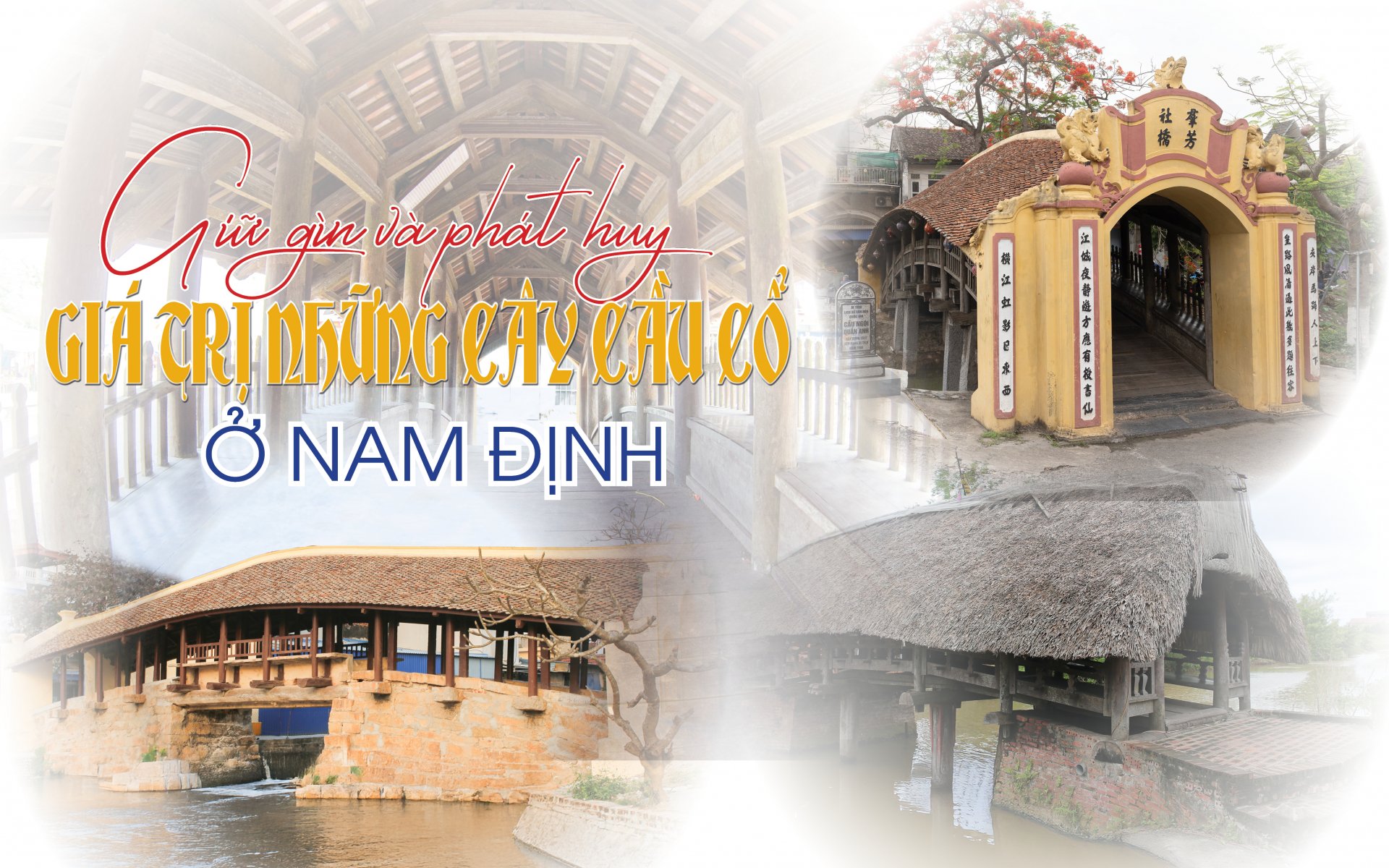 |
Nam Dinh is one of the few localities that still preserves ancient bridges with unique "upper house, lower bridge" architecture, including: Luong market tile bridge, Hai Anh commune (Hai Hau), Thuong market tile bridge, Binh Minh commune (Nam Truc) and Kenh village covered bridge in Co Le town (Truc Ninh). Over time, all three bridges still retain their ancient appearance, becoming the pride of local people.
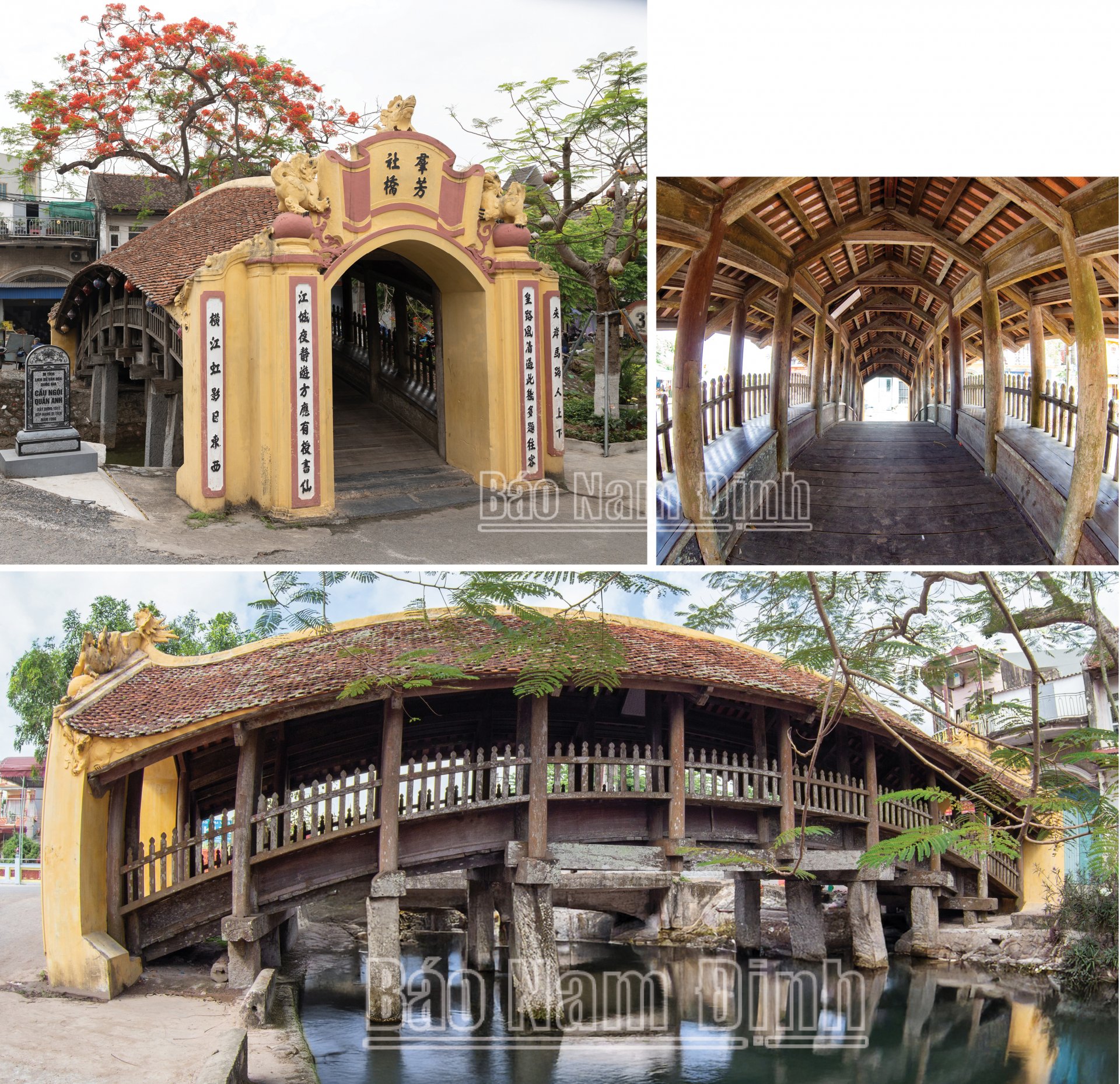 |
| Luong market covered bridge, Hai Anh commune (Hai Hau). |
Luong market's tiled bridge is located on the road leading to Luong pagoda, Hai Anh commune - the ancient land of Quan Anh, famous for its culture. Luong pagoda was built in the early 16th century. The tiled bridge next to the pagoda appeared around the 17th century. Initially, the bridge was only temporarily built with poles and a thatched roof. Later, it was replaced with a lim wood frame and tiled roof. The most significant restoration was in 1922, when the bridge was completely tiled. The bridge consists of 9 compartments, the lim wood frame is curved like a dragon. The roof is covered with yin and yang dragon scale tiles. The entire bridge is placed on 18 green stone pillars, arranged in 6 sturdy rows. On both sides there are resting corridors, with simple but delicately carved wooden railings. The architecture is soft, in harmony with the landscape of the pagoda and Luong market next door. As one of the three most beautiful ancient tiled bridges in Vietnam, a cultural symbol of the coastal countryside of Hai Hau, the tiled bridge has been mentioned in folk songs: "Tea at tiled bridge, silk at Luong market". In 1990, the bridge, along with Luong Pagoda and Phong Lac Communal House, were ranked as National Historical and Cultural Monuments. In 2012, Luong Market covered bridge was issued on a postage stamp.
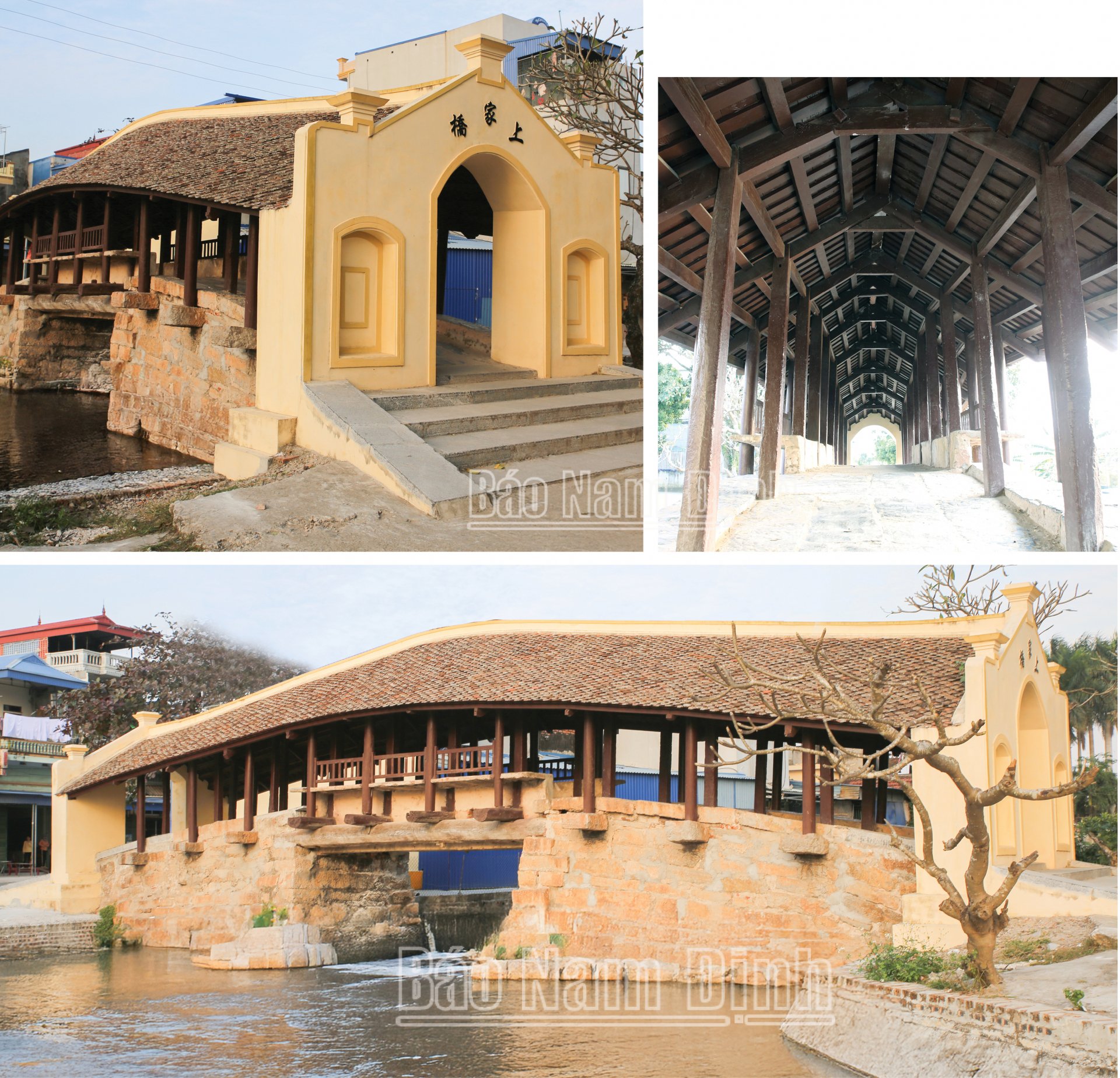 |
| Thuong market covered bridge in Binh Minh commune (Nam Truc). |
The covered bridge of the Thuong market, Thuong Nong village, Binh Minh commune (Nam Truc) across the Ngoc river, was built around the 18th century, during the Later Le dynasty. Legend has it that Princess Nguyen Thi Ngoc Xuan - a concubine of Lord Trinh - was the one who built the bridge. Before that, people only crossed by temporary wooden bridge. The bridge was made of ironwood frame in the style of "thuong gia ha kieu". The roof was covered with curved tiles, reflecting on the year-round clear river. The two ends of the bridge were built with brick walls, with a walkway in the middle. The bridge is more than 17 meters long, consisting of 11 bays. The middle part of the bridge is left open, more than 4 meters wide for boats to pass. The bridge bed is paved with slate, with benches on both sides. The bridge is associated with the old Thuong market - a bustling agricultural trading place. The Ngoc river flowing under the bridge was once called "the clear jade stream" by poet Doan Van Cu, evoking a rich and poetic countryside space. The Thuong market bridge has been restored many times. In 2003, the bridge was recognized as a provincial relic; In 2012, Thuong Market Bridge and Ba Temple were ranked as National Monuments.
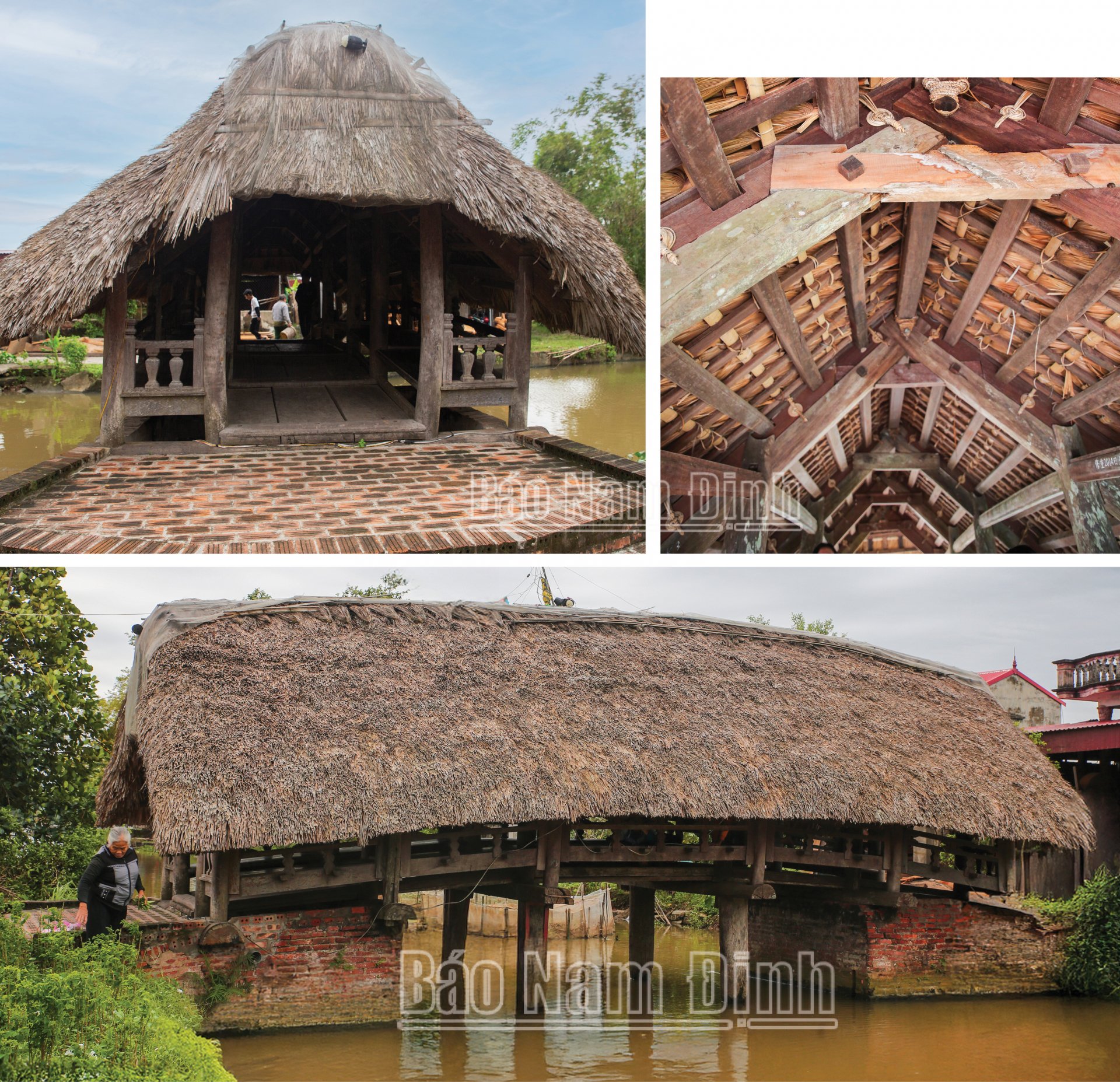 |
| Kenh village bridge in Co Le town (Truc Ninh). |
Unlike the two bridges above, Kenh village bridge in Co Le town (Truc Ninh) has a roof thatched with palm leaves. This is the only remaining wooden bridge with a thatched roof in our country, still retaining the "upper house, lower bridge" architecture. According to legend, the bridge dates back to the feudal period. The original roof was made of mulberry trees - a light material that can withstand storms. The bridge has 5 spans, is about 10 meters long and 4 meters wide. The bridge frame is made of ironwood. Four large pillars are planted deep in the riverbed, each pillar is over 50cm in diameter. The bridge has a graceful, rustic shape. Kenh village bridge used to be a place to hide cadres during the resistance war. The thatched roof covers everything, keeping people safe when crossing the river. When peace is restored, the bridge is a place for community activities. Children play, the elderly enjoy the breeze. Co Le people consider the bridge a part of the soul of the countryside. Every time the thatched roof rots, the villagers come together to replace it.
Three bridges – three historical slices. Each bridge carries its own story, linked to the life, beliefs and memories of the community. In the flow of modernity, the three bridges still quietly connect people with their roots.
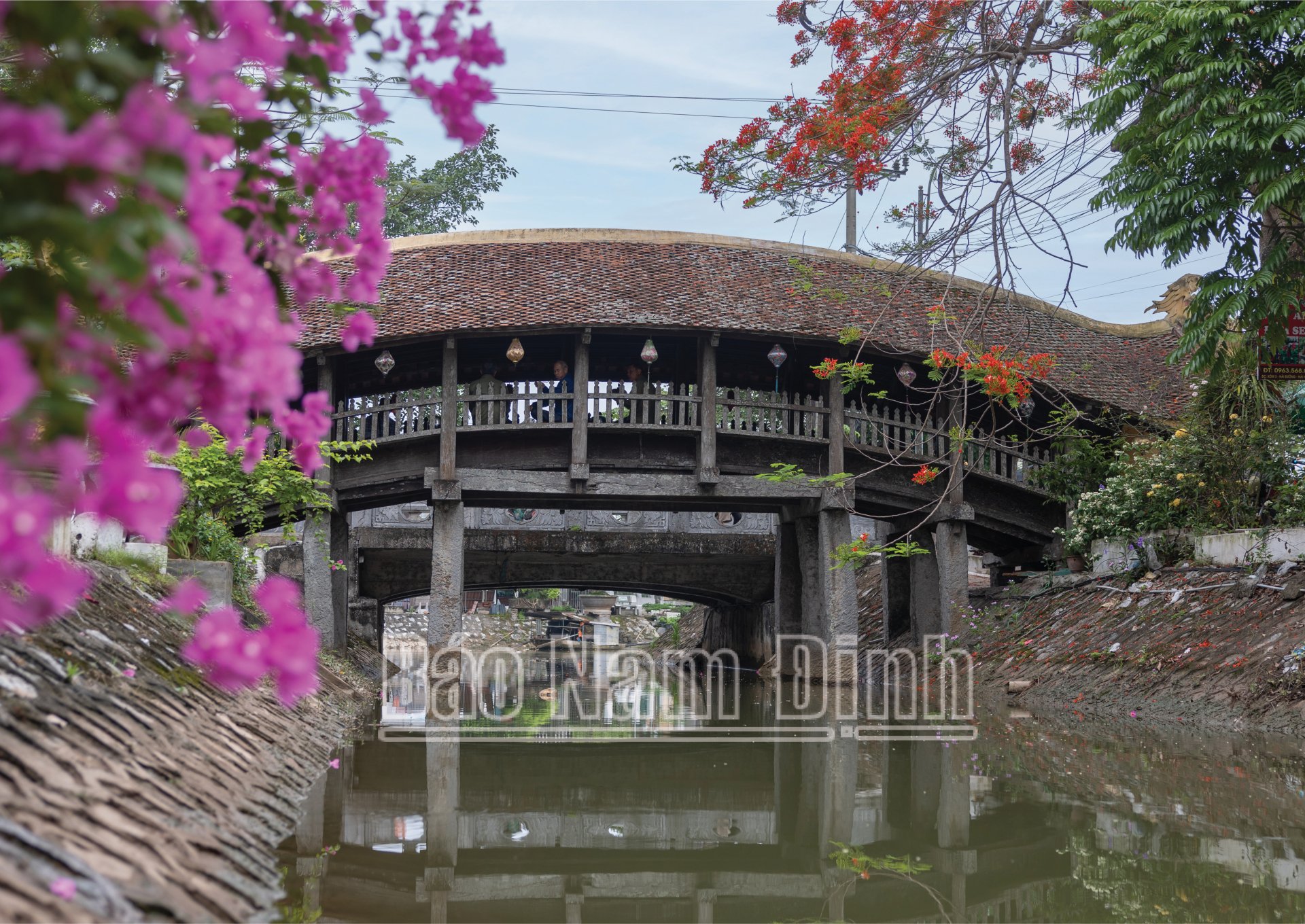 |
| The architecture of Hai Anh covered bridge is in harmony with the landscape of the pagoda and Luong market next to it. |
Recognizing the value of ancient bridges, Nam Dinh province and localities have made great efforts in conservation work. In Hai Hau district, the tiled bridge of Luong market has been protected since early on. The relic complex of Luong pagoda - Ngoi bridge has been ranked at the national level since 1990, creating a legal basis for long-term preservation. Local authorities regularly inspect and repair degraded parts of the bridge. Over the past 500 years, the bridge has been restored many times but still retains its ancient appearance. In Nam Truc district, the tiled bridge of Thuong market has also been focused on restoration and renovation. In 1993, due to termites damaging the bridge's walls, the locality carried out a major restoration, replacing some wooden parts with more durable materials. The tiled roof of the bridge was also repaired in 2009. Notably, after being recognized as a National Monument in 2012, the Thuong Market Bridge had a restoration project with a budget of about 200 million VND from the State to repair 5/11 bridge sections, replace new tiles in damaged parts and reinforce some columns and beams with ironwood. In Truc Ninh district, in recent years, with community resources, the tiled bridge has been continuously cared for and periodically repaired. In 2014, facing the deterioration of the bridge, the people of Kenh village called on their children living far away from home to contribute funds with the government to make major repairs to the bridge. Up to now, the bridge roof has been completely re-roofed with palm leaves, the bridge piers and footers have been firmly reinforced. Thanks to the joint efforts of the government and the people, the Kenh village bridge still retains its traditional wooden structure and thatched roof - a unique feature that cannot be found anywhere else.
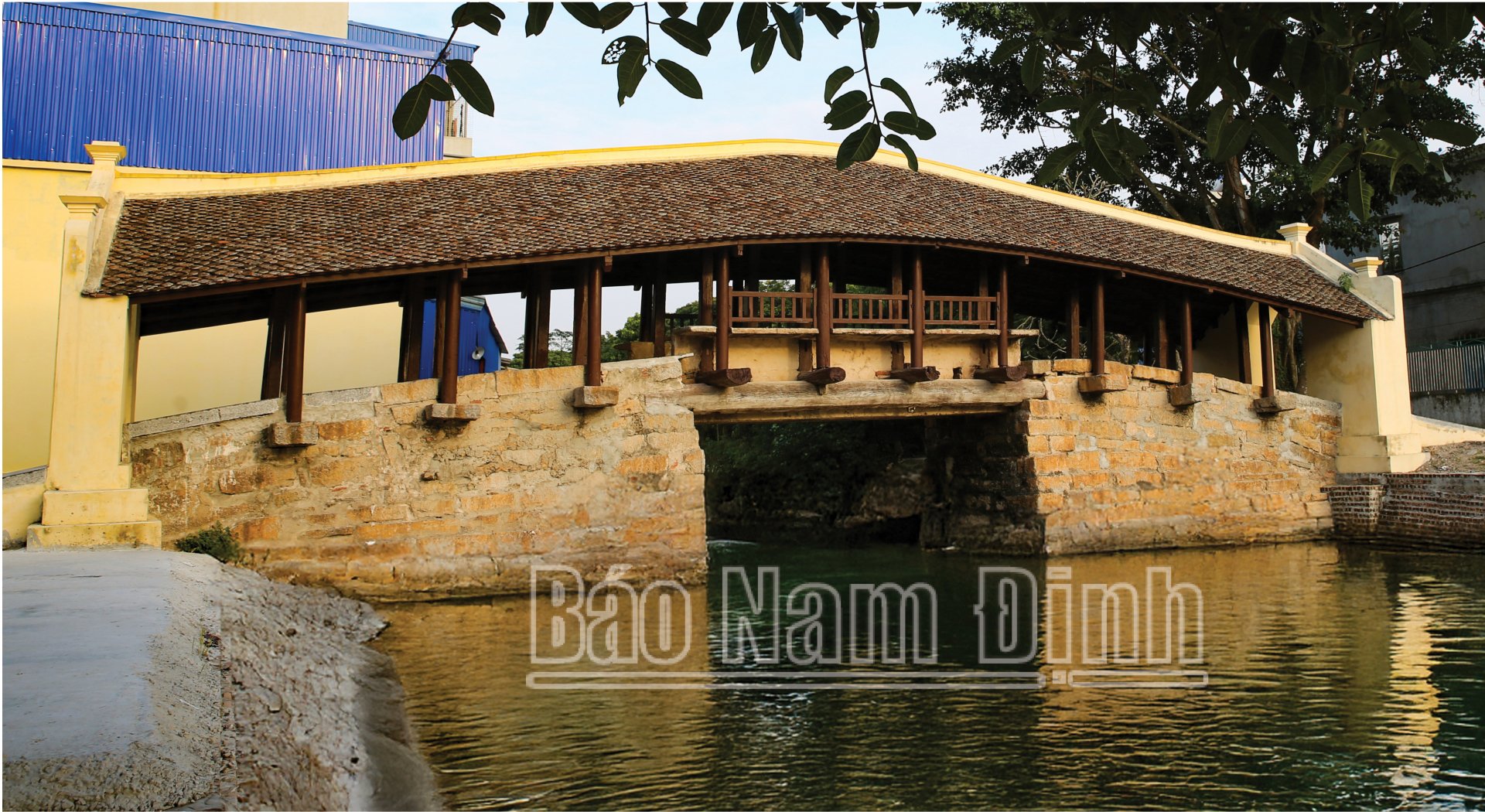 |
| Panoramic view of Thuong market covered bridge in Binh Minh commune (Nam Truc). |
The ancient bridges have both historical and architectural value and great tourism potential. Recognizing this, Nam Dinh has initially included the heritage of the covered bridges in promotional and sightseeing programs. Professional units under the Department of Culture, Sports and Tourism in coordination with the Department of Culture - Information of the districts have organized surveys and built "tours" within the province associated with the ancient bridges. Tourists coming to Nam Dinh are often introduced to visit the covered bridge of Luong market - Luong pagoda (Hai Hau), the covered bridge of Thuong market - Ba Chua Ngoc Xuan palace (Nam Truc) and the bridge of Kenh village - Co Le pagoda (Truc Ninh). Preliminary statistics show that the number of visitors to the covered bridges is increasing, especially during festivals or on weekends when there are rural markets. Thanks to the effects of media and social networks, the image of Nam Dinh covered bridges is gradually becoming known to many people, contributing to the development of local tourism.
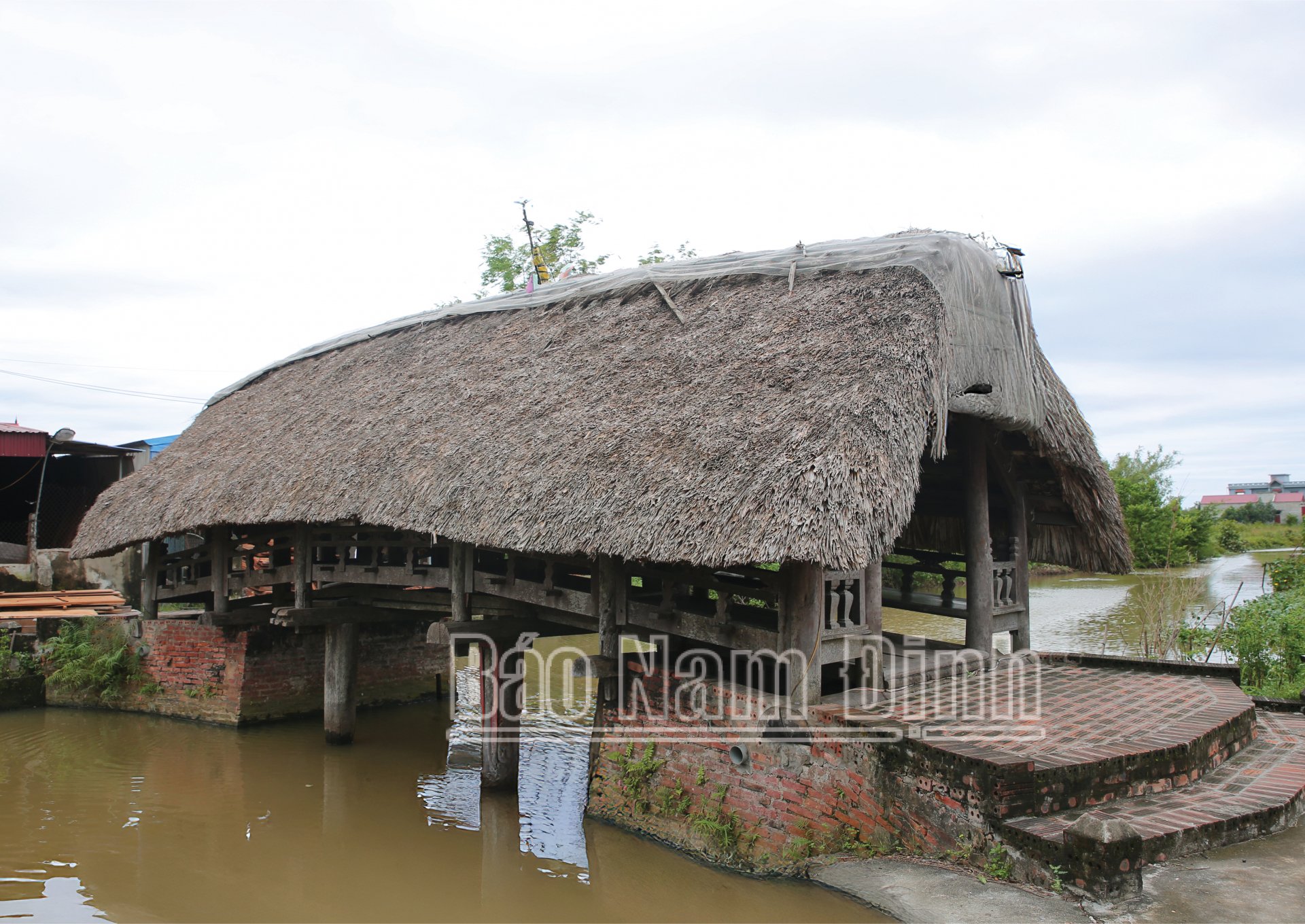 |
| Panoramic view of Kenh village bridge in Co Le town (Truc Ninh). |
The ancient bridges in Nam Dinh are invaluable assets, the crystallization of the skillful hands and creative minds of our ancestors from hundreds of years ago. Not only serving transportation, these bridges also leave a deep mark in the history of the community, contributing to creating the unique cultural identity of each countryside. The preservation and promotion of the value of ancient bridges, especially tile-roofed bridges, requires a balance between preserving the original state of the relics and adapting to the purpose of sustainable tourism. In the coming time, there needs to be stronger cooperation from both the government and the people, both mobilizing social resources to restore and embellish ancient bridges according to standards, and strengthening tourism promotion and connection to bring heritage values closer to the community and visitors.
Article and photos: Viet Du
Source: https://baonamdinh.vn/multimedia/202504/giu-gin-va-phat-huy-gia-tri-nhung-cay-cau-co-o-nam-dinh-8c34d77/


![[Photo] General Secretary To Lam presents the title "Hero of Labor" to the Party Committee, Government and People of Ho Chi Minh City](https://vphoto.vietnam.vn/thumb/1200x675/vietnam/resource/IMAGE/2025/4/30/08a5b9005f644bf993ceafe46583c092)



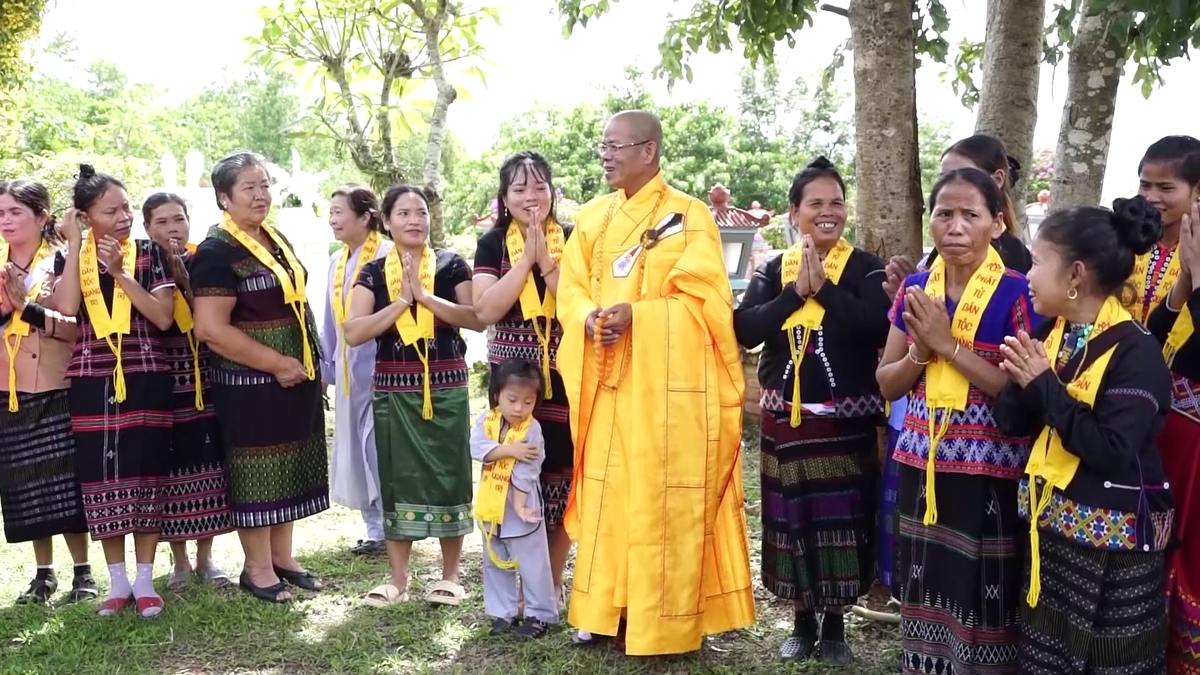
![[Photo] Flag-raising ceremony to celebrate the 50th anniversary of the Liberation of the South and National Reunification Day](https://vphoto.vietnam.vn/thumb/1200x675/vietnam/resource/IMAGE/2025/4/30/175646f225ff40b7ad24aa6c1517e378)
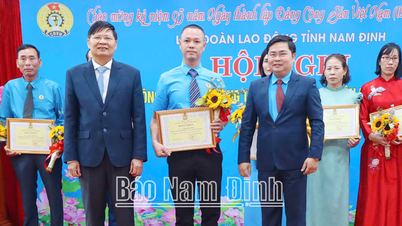
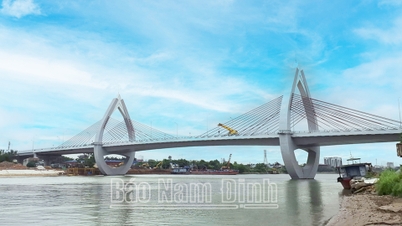


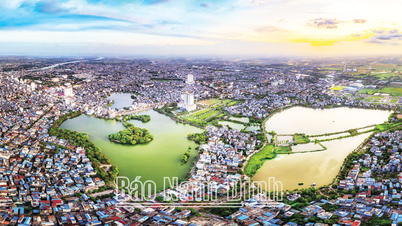
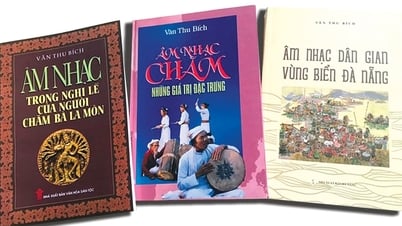





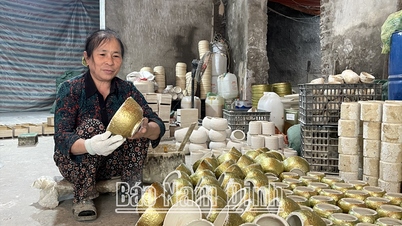
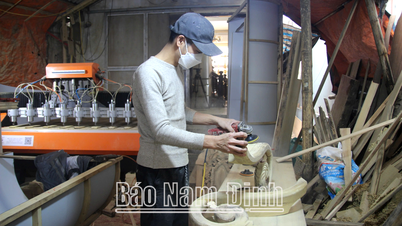
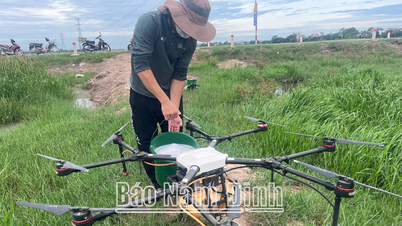
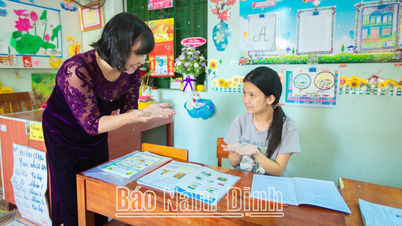


![[Photo] Demonstration aircraft and helicopters flying the Party flag and the national flag took off from Bien Hoa airport](https://vphoto.vietnam.vn/thumb/1200x675/vietnam/resource/IMAGE/2025/4/30/b3b28c18f9a7424f9e2b87b0ad581d05)
















































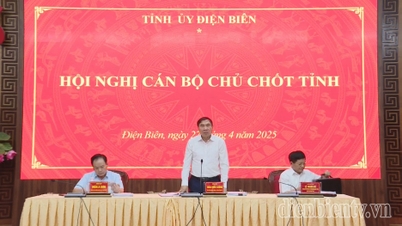














Comment (0)